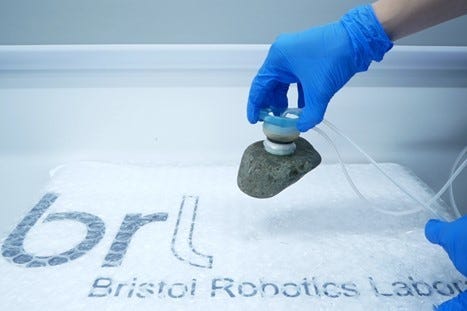Halliburton and Microsoft do not compute for OPEC: Gadfly
Say "platform" at an oil conference and you'll usually conjure up an image of some windswept deck on a rig far from shore. Like so much else, though, technology is rewriting the energy industry's dictionary.
August 31, 2017

Halliburton Co. and Microsoft Corp. announced a new alliance to “digitally transform the oil and gas industry,” which, as a phrase, feels as if it was written by an artificial intelligence designed solely to set your teeth on edge. Before you click away, though, consider that this union of Big Oil and Big Data is a big reason OPEC is doomed.
Contrary to conventional wisdom, the oil business is a high-tech one. You don’t map out complex rock formations thousands of feet beneath the ground in three or four dimensions and then drill into them without advanced tools. For example, Total SA, the French oil major, boasts the 19th-most powerful supercomputer in the world, Pangea, which has clocked a speed of more than 5 quadrillion calculations a second (technical note: pretty fast) according to The Top 500 List.
What the industry is not, by and large, is well connected.
Speaking at a conference in Houston in March, Ashok Belani, Schlumberger Ltd.’s technology chief, bemoaned the fact that the average well has less than 10 gigabytes of data associated with it, equivalent to a couple of high-definition movies. In a survey of more than 4,800 professionals conducted in late 2014, MIT Sloane Management Review and Deloitte scored the oil and gas sector’s “digital maturity” at 4.68 out of 10. As a measure of how far the sector has embraced digital technologies, that put oil and gas toward the bottom along with education, insurance and health care — which is pretty depressing for an industry stuffed with engineers and scientists.
Related: Halliburton, Microsoft to digitize oil fields; smart factory research
This is changing, however, helped by the happy trend of falling technology costs and the less-happy reality of lower oil prices. The latter has not only forced E&P companies to find cheaper, quicker ways of producing oil and gas, it has forced Halliburton and its rivals to find ways of boosting bottom lines.
This makes sense, unfortunately, because like their E&P clients, contractors tend to lose their heads in a boom-and-boost capacity, like they don’t know the meaning of the word “cycle.” In this crash, a surfeit of pressure-pumping equipment used for fracking has been a consistent theme, at least until recently. And even areas of supposedly tight conditions, such as the sand used in fracking, can result in sudden capacity expansions that send highflying stocks tumbling:
The key to restoring margins sustainably isn’t discounting to retain relationships with fickle E&P firms or just building more capacity. It’s helping those E&P firms work smarter to boost their atrophied bottom lines and taking a slice of that for yourself.
The bigger contractors such as Halliburton and Schlumberger have been banging this drum throughout the downturn on several fronts, such as standardizing processes and integrating different services.
Digitization fits with this. EOG Resources Inc. is one of the more digitally savvy E&P firms and actually has a chief information and technology officer. On the last earnings call, he boasted about how the company’s teams now have access to more than 80 real-time data streams and sensors embedded in wells, giving them a constantly updated picture of what’s happening beneath the ground.
The killer app here, in every sense of the word, is providing crews and their managers with an integrated platform; a suite of sensors and software communicating seamlessly, updating constantly and available to all involved.
Halliburton already has such a platform, called DecisionSpace. Marrying it with Microsoft’s cloud-computing and artificial intelligence capability has the potential to not only take and organize more of the data spewing from an E&P client’s fields but use machine learning to make better decisions about, say, when a vital piece of equipment needs to be replaced or how a fracking job could be done more quickly and cheaply.
Related: In the energy sector, data is the new oil
Developing these 21st-century platforms offers a new way to make brands like Halliburton count for more. A similar logic drives Schlumberger’s investment in its Petrel platform and Baker Hughes merging into General Electric Co.’s oil and gas business, with the latter’s Predix industrial software. Partnering with companies like Microsoft not only brings in a tech company keen to push its ever-expanding cloud capacity into a new market, it also offers credibility on issues like cybersecurity, which are only becoming more important as wells become more connected.
For the likes of OPEC, though, this is not good. Its members have relied on sovereign control of resources and delays in developing non-OPEC fields to influence prices.
As I wrote here, the advent of shale, with its faster schedules and an experience curve more akin to manufacturing, has overturned this strategy. U.S. shale fields account for less than 10 percent of global output, but they sway the whole industry because of what they represent: A vast resource base where E&P firms have pushed down production costs, experimenting with new techniques and technologies. This has spread, as technology always does, into other parts of the business, such as deepwater drilling.
The upshot is a more competitive global oil industry where survival rests on managing costs rather than trying to manage prices.
This has spelled deflation for oil markets already. Now, the machines are coming.
This column does not necessarily reflect the opinion of Bloomberg LP and its owners.
About the Author(s)
You May Also Like
.png?width=700&auto=webp&quality=80&disable=upscale)
.png?width=700&auto=webp&quality=80&disable=upscale)

.png?width=300&auto=webp&quality=80&disable=upscale)
.png?width=300&auto=webp&quality=80&disable=upscale)
.png?width=300&auto=webp&quality=80&disable=upscale)
